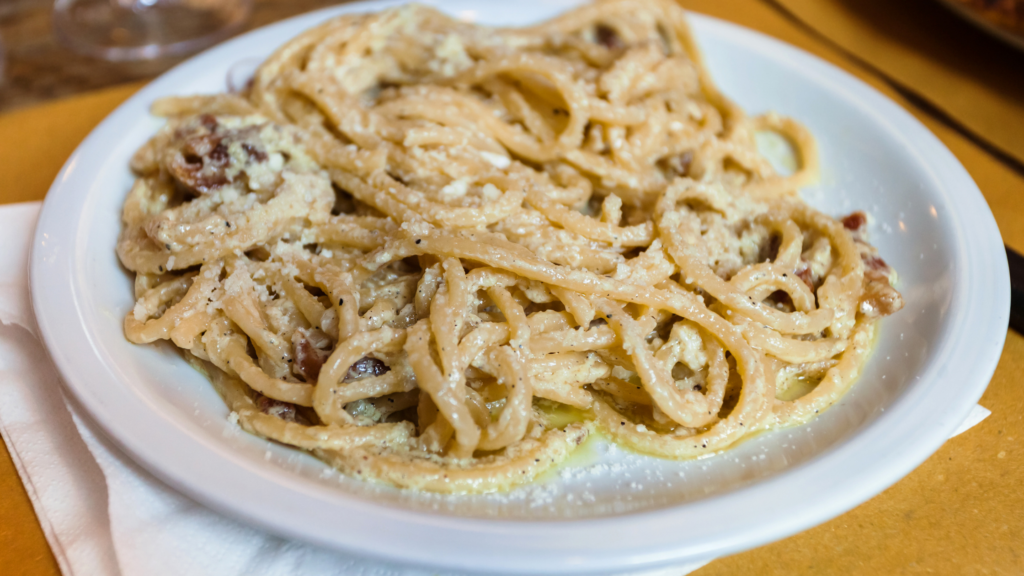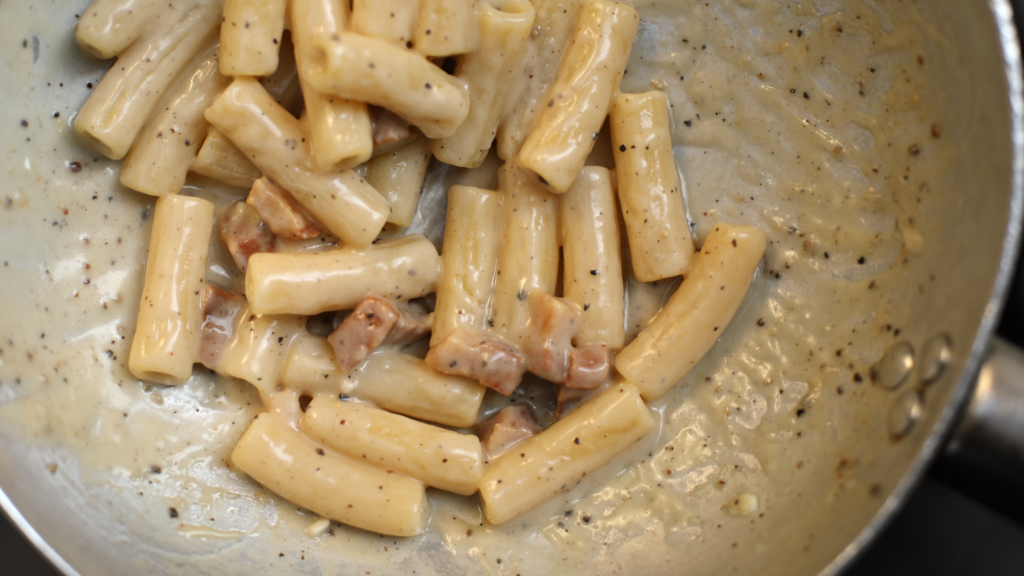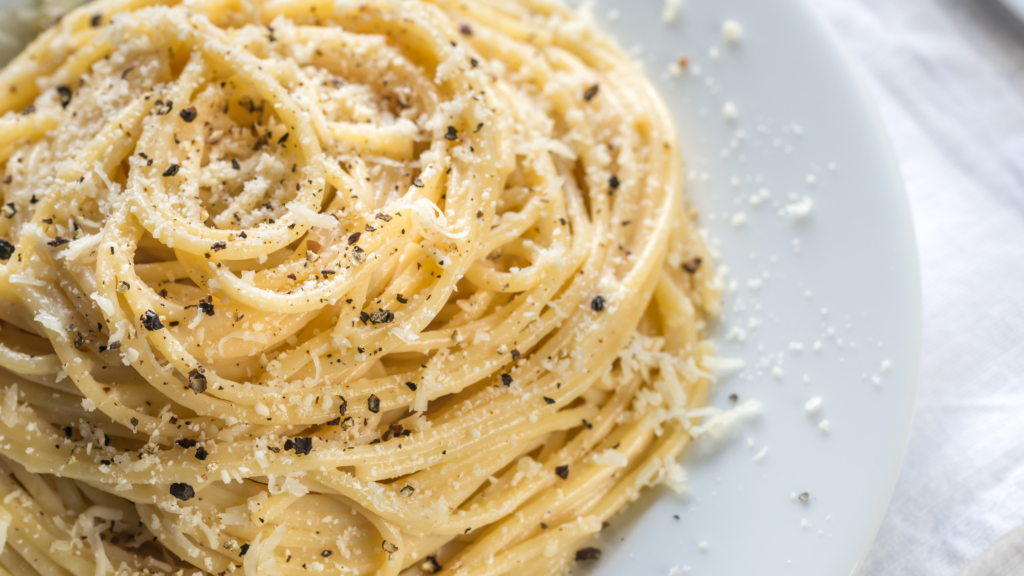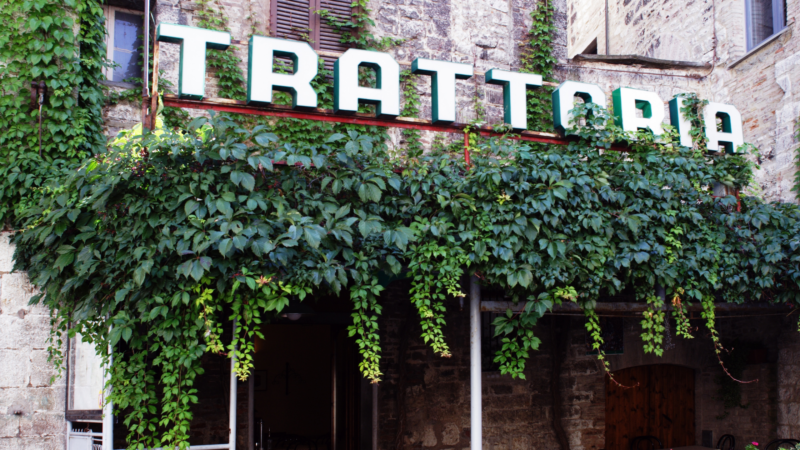Every Italian region and city has its own recipes. In the capital, traditional Roman pasta dishes are popular with locals and tourists alike. Here are four of our top recommendations to try on your next visit:
Carbonara
Think you know Carbonara? If you haven’t been to Italy before, chances are you’ve never tried the real thing. Made with eggs, hard cheese, cured pork, and black pepper, true Carbonara is a far cry from the creamy pasta dish you are used to.
Carbonara first appeared in the 1940s, but nobody is sure where the recipe came from. Some believe that it was from the Apennine hills; others attribute it to American soldiers who arrived in Italy during World War II. However, most sources trace its origin to the region of Lazio where bacon, cheese and pepper are the ingredients in several popular pasta dishes.
You are probably familiar with ready-to-eat Carbonara sauce found in grocery stores around the world. Unlike the original recipe where the creamy texture is created on the pasta itself, the commercial versions are made with cream. In a recent YouGov poll almost 70% of Italians thought making Carbonara with cream was unacceptable; you might laugh, but we’re pretty sure that once you’ve tried the real deal in Rome, you won’t be doing that again!

Gricia
Pasta alla gricia is one of the most famous and ancient dishes in Rome.
According to food historians, this recipe dates back to 400 AD and has remained the same since then. This dish consists of a few fresh ingredients: pasta, pecorino romano, black pepper and guanciale. An essential ingredient in this traditional dish is Pecorino Romano cheese.
Few cheeses in the world have such ancient origins as the hard, salty Pecorino Romano. Farmers in Lazio have been producing this cheese for more than 2000 years! In the imperial palaces it was a prized dressing at banquets, while its long-term storage capacity made it a staple for soldiers and farmers.
But the most distinctive ingredient in this recipe is guanciale. The name “guanciale” comes from the Italian word guancia, meaning “cheek”. The Pork cheek is rubbed with salt, spices, and then aged for 60 days. The longer the aging, the more flavorful the meat.

Amatriciana
Today, pasta all’amatriciana is very much a Roman dish, but it originated in the small town of Amatrice, in northern Lazio. The basic ingredients are pecorino, guanciale (pork jowl), chili pepper and tomato sauce. After Colombus brought tomatoes and chili to Europe, the people of Amatrice added them to the popular pasta alla gricia, creating a total new dish. Cheese farmers probably introduced it to Rome, where it quickly became a ‘local’ classic!

Cacio e Pepe
Cacio e Pepe is another recipe with ancient origins. The legend of this simple but delicious Italian pasta recipe dates back to the Roman Empire. For centuries, Cacio e Pepe has been the typical meal of Roman shepherds.
The secret of cacio e pepe is the creamy sauce, obtained by combining the best quality Pecorino Romano cheese and a few spoons of the water used to cook the spaghetti. The cheese, the starch in the cooking water and the heat from the pasta are all you need to make the original cacio e pepe sauce. Simple, yes, but not easy to get right. Locals will tell you the perfect cacio e pepe can’t be too ‘dry’ nor swimming in sauce. Find the closest trattoria romana with a crowd of local patrons and try this deliciously simple dish for yourself!

Have you tried any of these Roman pasta dishes? Let us know your recommendations for the ‘best pasta in Rome’ in the comments below.
